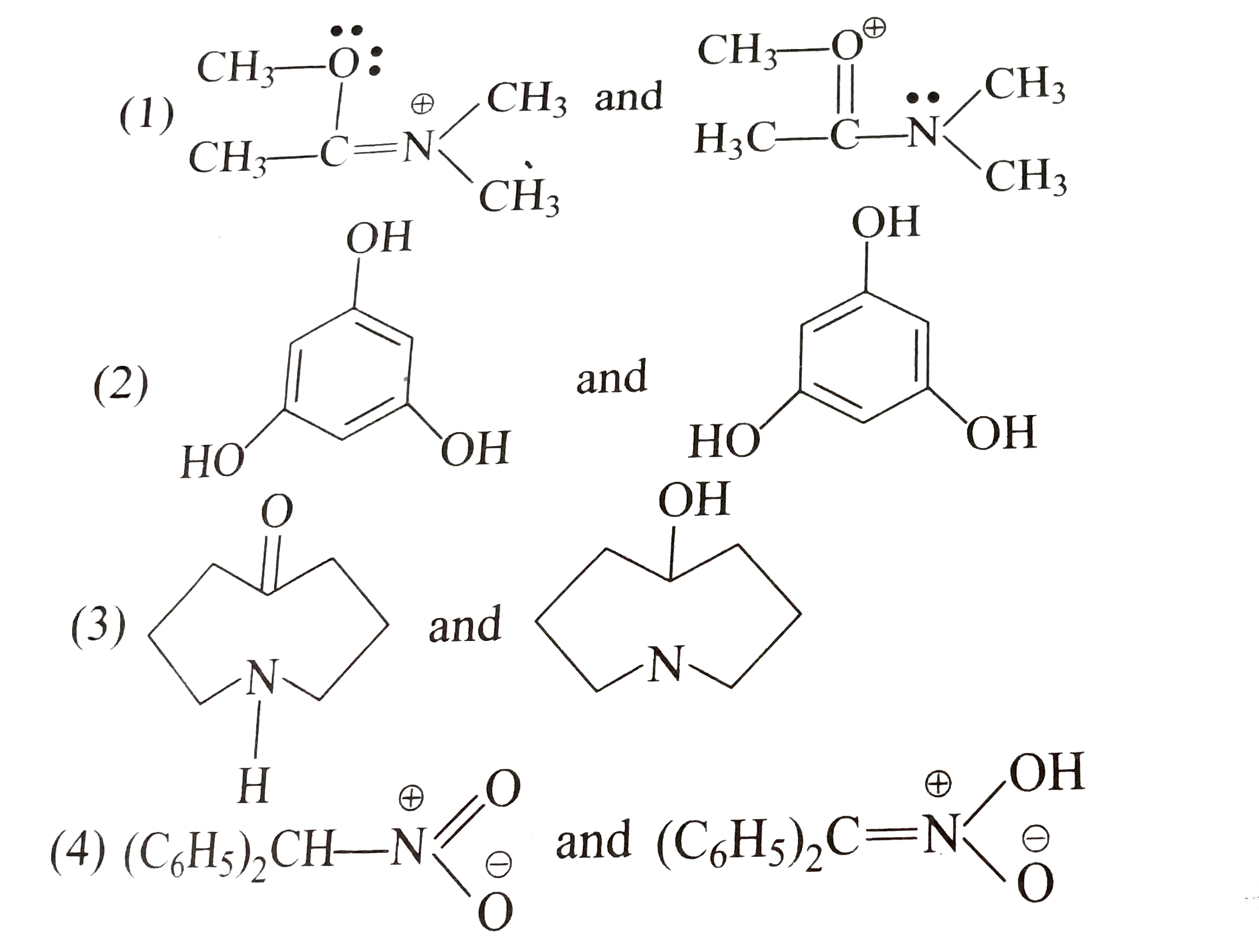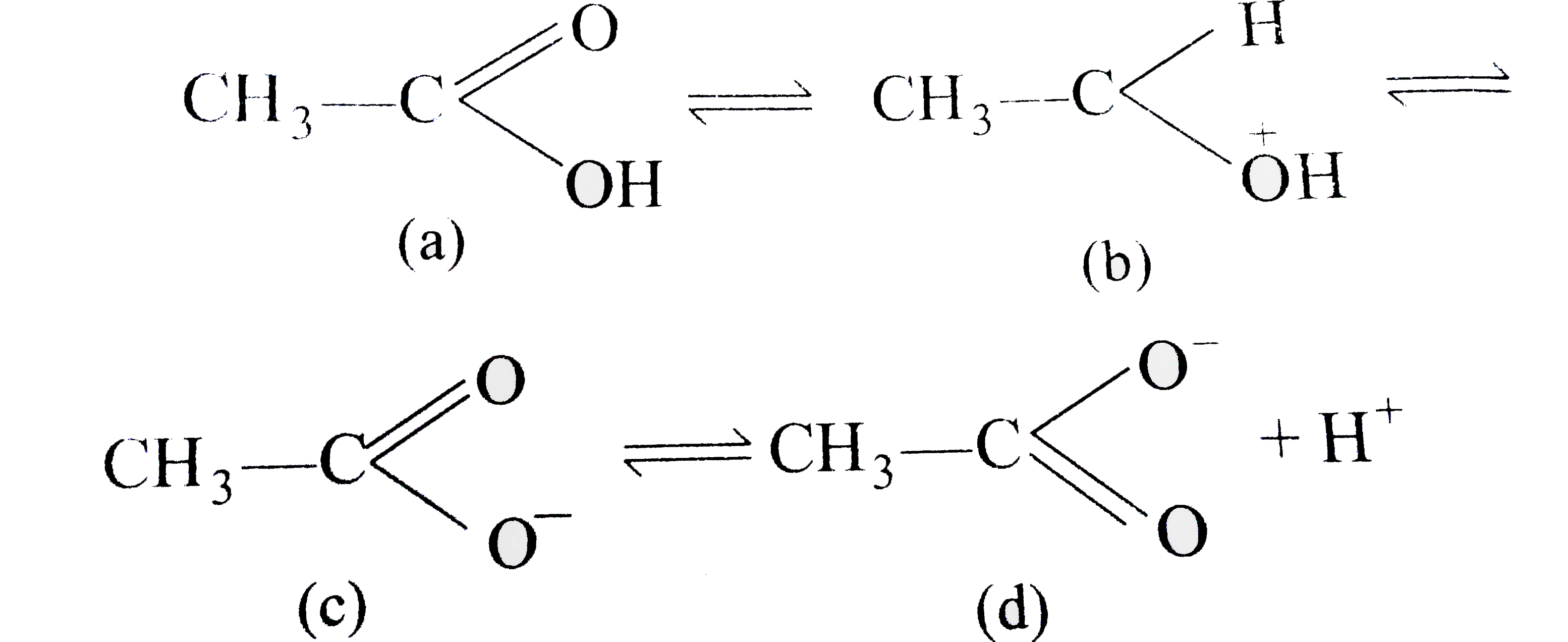Which of the following structures are resonance structures ?



CH3−CH=CH−CH3&CH3−CH2−CH=CH2
The correct Answer is:B
To determine which of the given structures are resonance structures, we need to follow these steps:
Step 1: Understand Resonance Structures
Resonance structures are different ways of drawing the same molecule that show the delocalization of electrons. They must have the same arrangement of atoms but differ in the placement of electrons (bonds and lone pairs).
Step 2: Analyze Each Option
- Option 1: Check if the arrangement of atoms has changed. If it has, it cannot be a resonance structure.
- Option 2: Look for a structure where only the electrons are rearranged, not the atoms. If the atoms remain in the same position and only the electrons shift, it is a resonance structure.
- Option 3: Determine if the structures are tautomers. Tautomers are structural isomers that can interconvert, typically involving the relocation of a hydrogen atom and a double bond. If they are tautomers, they are not resonance structures.
- Option 4: Check if the structures are completely different molecules. If they are not isomers, they cannot be resonance structures.
Step 3: Conclusion
After analyzing the options:
- Option 1: Not a resonance structure (atoms rearranged).
- Option 2: Resonance structure (only electrons rearranged).
- Option 3: Not a resonance structure (they are tautomers).
- Option 4: Not a resonance structure (not isomers).
Final Answer
The correct answer is Option 2 as it represents resonance structures.
---
Resonance structures are different ways of drawing the same molecule that show the delocalization of electrons. They must have the same arrangement of atoms but differ in the placement of electrons (bonds and lone pairs).
- Option 1: Check if the arrangement of atoms has changed. If it has, it cannot be a resonance structure.
- Option 2: Look for a structure where only the electrons are rearranged, not the atoms. If the atoms remain in the same position and only the electrons shift, it is a resonance structure.
- Option 3: Determine if the structures are tautomers. Tautomers are structural isomers that can interconvert, typically involving the relocation of a hydrogen atom and a double bond. If they are tautomers, they are not resonance structures.
- Option 4: Check if the structures are completely different molecules. If they are not isomers, they cannot be resonance structures.
After analyzing the options:
- Option 1: Not a resonance structure (atoms rearranged).
- Option 2: Resonance structure (only electrons rearranged).
- Option 3: Not a resonance structure (they are tautomers).
- Option 4: Not a resonance structure (not isomers).
The correct answer is Option 2 as it represents resonance structures.
Topper's Solved these Questions
- GENERAL ORGANIC CHEMISTRY-IBOOK - RESONANCECHAPTER - GENERAL ORGANIC CHEMISTRY-IEXERCISE - EXERCISE-1 PART-III (MATCH THE COLUMN)
1 Video
- GENERAL ORGANIC CHEMISTRY-IBOOK - RESONANCECHAPTER - GENERAL ORGANIC CHEMISTRY-IEXERCISE - EXERCISE-2 PART-I
20 Videos
- GENERAL ORGANIC CHEMISTRY-IBOOK - RESONANCECHAPTER - GENERAL ORGANIC CHEMISTRY-IEXERCISE - EXERCISE-1
16 Videos
- GENERAL ORGANIC CHEMISTRY IIBOOK - RESONANCECHAPTER - GENERAL ORGANIC CHEMISTRY IIEXERCISE - Part-III: Section-5: Matching List Type
1 Video
- HYDROGEN AND ITS COMPOUNDSBOOK - RESONANCECHAPTER - HYDROGEN AND ITS COMPOUNDSEXERCISE - INORGANIC CHEMISTRY(Hydrogen & its compunds Y environment chemistry)
33 Videos
Similar Questions
Knowledge Check
Which of the following pairs of structure are resonance structure?
 A1 and 4B2 and 3C1 and 2Dall of these
A1 and 4B2 and 3C1 and 2Dall of theseWhich of the following pairs are resonance structures of each other ?
A B
B C
C D
D
Which of the following pairs are resonating structures ?
A B
B C
C D
D
Which of the following is the most stable resonance structure ?
View SolutionWhich of the following represents resonating structure of

View SolutionWhich of the following is pair of resonance structure?
View SolutionWhich of the following pair constitute resonance structure?
View SolutionWhich of the following is not a resonance structure of the other?
View Solution


 .
.